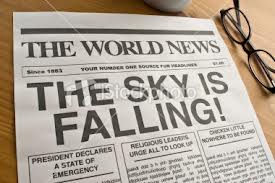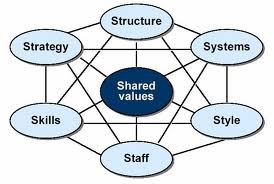 I hope your New Years celebration was fun, safe and full of family and friends. Welcome to 2013 and an exciting new opportunity for you and your non-profit organization.
I hope your New Years celebration was fun, safe and full of family and friends. Welcome to 2013 and an exciting new opportunity for you and your non-profit organization.
Rather than host a party this year, John and I went over to our friend’s — Lynn & Maggie — house and spent the night rather than worrying about driving home on New Years Eve. When we woke up on New Years Day, we turned on CNN to see what (if anything) had happened with the congressional fiscal cliff negotiations and debate in Washington D.C.
While watching the coverage, Maggie innocently asked, “Why do these guys always wait to the last-minute to make such important decisions?”
As I chewed on her question, I realized this isn’t just a problem that haunts Congress. I see my for-profit friends struggle with the issue of procrastination. I also see many of my non-profit clients struggle with it.
While there are likely many reasons for procrastination (e.g. not having enough resources to adequately staff your agency or not being able to construct a reasonable annual performance plan), I discovered after some clicking around online that our friends at Psychology Today believe it goes much deeper than what you may think.
Rather than ruin the surprise, click here to read what Psychology Today. (Spoiler alert: Freud was wrong. It wasn’t because of your mother, but it may have something to do with your father. Uh-oh!)
After reading the online article about ‘WHY‘ I started clicking around for some answers about ‘WHAT‘ to do about this. Click here to read a post over at Lifehack blog titled “11 Practical Ways to Stop Procrastination”.
Honestly, I don’t think Congress played a game of chicken with the fiscal cliff and continues to risk a double dip recession because they are chronic procrastinators. I suspect this continues to happen because when you’re engaged in a negotiation, time plays a role when it comes to gaining leverage.
However, non-profit professionals such as yourself shouldn’t ignore the awesome question that Maggie asked on the morning of New Years Day. If you or your employees are procrastinations or if procrastination is embedded in your organizational culture, you might want to make a New Years resolution to tackle it in 2013. Why? Because this kind of behavior leads to dysfunction, drama and nothing good for your agency.
I hope you enjoyed the two links pertaining to the ‘WHY’ and ‘WHAT’. If you have other online resources to share, please do so in the comment box below because I’ve made this one of my New Years resolutions, too.
[Editors Note: By the way, please remember that we’re still on an irregular blog posting schedule this week and won’t resume “normal and routine” until next week — January 7-11.]
Happy New Year and . . . Here’s to your health!
Erik Anderson
Founder & President, The Healthy Non-Profit LLC
www.thehealthynonprofit.com
erik@thehealthynonprofit.com
http://twitter.com/#!/eanderson847
http://www.facebook.com/eanderson847
http://www.linkedin.com/in/erikanderson847

 Happy New Years Eve! Are you ready for 2013?
Happy New Years Eve! Are you ready for 2013? “It was about this time that another projector, the Rev Gilbert Tennent, came to me with a request that I would assist him in procuring a subscription for erecting a new meeting-house. It was to be for the use of a congregation he had gathered among the Presbyterians, who were originally disciples of Mr. Whitehead.
“It was about this time that another projector, the Rev Gilbert Tennent, came to me with a request that I would assist him in procuring a subscription for erecting a new meeting-house. It was to be for the use of a congregation he had gathered among the Presbyterians, who were originally disciples of Mr. Whitehead. Welcome to O.D. Fridays at DonorDreams blog. Every Friday for the foreseeable future we will be looking more closely at a recent post from John Greco’s blog called “
Welcome to O.D. Fridays at DonorDreams blog. Every Friday for the foreseeable future we will be looking more closely at a recent post from John Greco’s blog called “ This phenomenon is called the “crowding out effect” and I wrote about it in the following blog posts in 2011:
This phenomenon is called the “crowding out effect” and I wrote about it in the following blog posts in 2011: The crowding out effect is real, and it is something non-profit organizations need to understand and deal with. If not, then I advise putting the following age-old expression in a frame above the boardroom door: “The road to hell is paved with good intentions.”
The crowding out effect is real, and it is something non-profit organizations need to understand and deal with. If not, then I advise putting the following age-old expression in a frame above the boardroom door: “The road to hell is paved with good intentions.” Fundraising policies
Fundraising policies Yesterday morning Jimmie Alford died of an apparent heart attack at the age of 69. This sad news started circulating slowly as the day unfolded, and then it snowballed into an online viral event and my email inbox is full of people sharing the news, their grief, and their disbelief.
Yesterday morning Jimmie Alford died of an apparent heart attack at the age of 69. This sad news started circulating slowly as the day unfolded, and then it snowballed into an online viral event and my email inbox is full of people sharing the news, their grief, and their disbelief. It is that time of the year when retailers are pulling out every stop in their little bag of tricks to get your attention and hopefully your holiday dollars. One of those shiny objects that some retailers use is called cause related marketing (CRM). Wikipedia does a nice job of
It is that time of the year when retailers are pulling out every stop in their little bag of tricks to get your attention and hopefully your holiday dollars. One of those shiny objects that some retailers use is called cause related marketing (CRM). Wikipedia does a nice job of  Welcome to O.D. Fridays at DonorDreams blog. Every Friday for the foreseeable future we will be looking more closely at a recent post from John Greco’s blog called “
Welcome to O.D. Fridays at DonorDreams blog. Every Friday for the foreseeable future we will be looking more closely at a recent post from John Greco’s blog called “ In that five-minute period of time as I paced the back of the banquet hall, there was a moment where I stopped listening and worrying about LaShaunda and I focused on what was happening in the room:
In that five-minute period of time as I paced the back of the banquet hall, there was a moment where I stopped listening and worrying about LaShaunda and I focused on what was happening in the room: When I hear one donor say something once, I chalk it up to something interesting. When I hear two donors say the same thing, I usually think it is an interesting occurence. However, when three or more donors express the same sentiment, I sit up . . . take notice . . . and treat it like a potential trend.
When I hear one donor say something once, I chalk it up to something interesting. When I hear two donors say the same thing, I usually think it is an interesting occurence. However, when three or more donors express the same sentiment, I sit up . . . take notice . . . and treat it like a potential trend. While fear is irrational, it definitely impacts human behavior. I believe most students learn this in Psychology 101. So, if people “think” the sky is falling, it is falling regardless of the facts.
While fear is irrational, it definitely impacts human behavior. I believe most students learn this in Psychology 101. So, if people “think” the sky is falling, it is falling regardless of the facts. Here are a few quick tips you may want to remember when jumping into these discussions:
Here are a few quick tips you may want to remember when jumping into these discussions: This morning I am asking for your help with a small project I am working on. A few weeks ago I agreed to help one of my favorite non-profit organizations with a staff transition. Not only did their development director move on to greener pastures at the end of the summer, but their executive director also recently resigned. So, the board asked me to step into the void and help their management team with a variety of year-end miscellaneous projects (e.g. year-end holiday mailing, 2013 budget construction, resource development plan, etc).
This morning I am asking for your help with a small project I am working on. A few weeks ago I agreed to help one of my favorite non-profit organizations with a staff transition. Not only did their development director move on to greener pastures at the end of the summer, but their executive director also recently resigned. So, the board asked me to step into the void and help their management team with a variety of year-end miscellaneous projects (e.g. year-end holiday mailing, 2013 budget construction, resource development plan, etc). This question was inspired by a string of two or three grants in a row that this organization had just written. As a businessman, he asked this question because he is accustom to looking at everything through a “return on investment” (ROI) lens. In hindsight, this is what he saw:
This question was inspired by a string of two or three grants in a row that this organization had just written. As a businessman, he asked this question because he is accustom to looking at everything through a “return on investment” (ROI) lens. In hindsight, this is what he saw: Seriously, your feedback this morning will directly help another organization in its pursuit of developing fundraising best practices. Your participation will take all of a minute or two this morning. Please weigh-in. Your collective wisdom is massive and will bring tremendous value to this organization’s discussion. You can consider the few minutes that you invest in responding to this request as your “good turn” this holiday season. Please pay it forward!
Seriously, your feedback this morning will directly help another organization in its pursuit of developing fundraising best practices. Your participation will take all of a minute or two this morning. Please weigh-in. Your collective wisdom is massive and will bring tremendous value to this organization’s discussion. You can consider the few minutes that you invest in responding to this request as your “good turn” this holiday season. Please pay it forward! For the last few weeks, I’ve found myself in a number of non-profit boardrooms talking to board volunteers about a variety of difficult subjects. These difficult conversations covered the following areas uncomfortable areas: staff reduction, re-organization, service reduction, radical revenue enhancement, board transformation, and so on. In each instance, it felt like a “soul-searching” discussion . . . very big and very weighty. I found myself wishing for a magic pill that I could dispense that would make their path forward a little less difficult.
For the last few weeks, I’ve found myself in a number of non-profit boardrooms talking to board volunteers about a variety of difficult subjects. These difficult conversations covered the following areas uncomfortable areas: staff reduction, re-organization, service reduction, radical revenue enhancement, board transformation, and so on. In each instance, it felt like a “soul-searching” discussion . . . very big and very weighty. I found myself wishing for a magic pill that I could dispense that would make their path forward a little less difficult. So, one organizations might find some comfort in their shared values of:
So, one organizations might find some comfort in their shared values of: